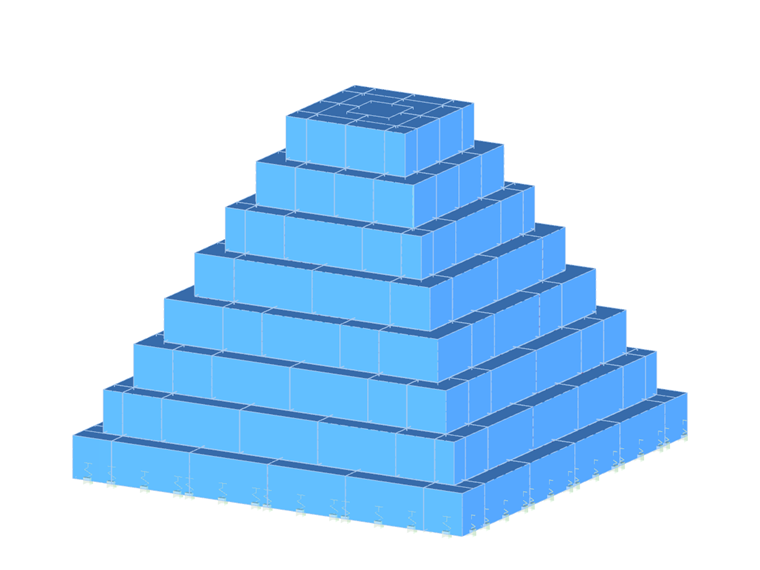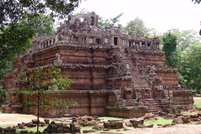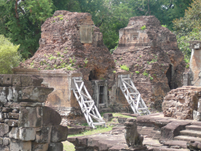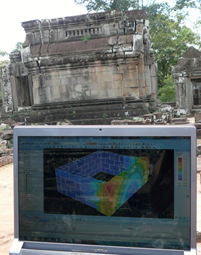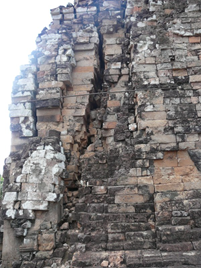Structure
The Angkor stone monuments, built between the 8th and the 15th century, are mostly ruins, in various stages of deterioration at present. The majority of the monuments were constructed from stone blocks assembled without binding material; firebricks were used at times. At the temples preserved so far, continuous development of failures occurs, mainly disintegration of stone blockwork, caused by a combination of several different factors.
In addition to the improper construction techniques, as regarded with modern knowledge, demanding climatic conditions represent one of the main causes of deterioration.
Structural Design
Monitoring the deformations and temperatures of selected temples showed that the difference between the maximum and minimum temperatures on intensely insulated external surfaces exceeds 60°C during a cycle of one year. Considerable thermal differences exist between night and day as well. The temperature on the internal surface was often about 40°C lower than on the external surface.
This contributes to uneven loading and large dilatation motions within the stone structures. Combined with other factors, gradual expansion of joints occurs among the blocks and individual stones drop out of the structure. Finally, entire temple parts disintegrate or collapse.
Numerical simulations of the monuments' static behavior were carried out with the FEA software RFEM, which allows reaching a high correspondence rate between the properties of the numerical models and the real structures of the stone temples. The goal of the analysis is to predict the further development of their technical condition, based on the simulation results.
Among other things, the results obtained could also serve to elaborate a project proposing optimal preservation procedures for the stabilization and rescue of these rare monuments.
So far, 3D models of typical structural segments, such as a single wall, a tetragonal pyramid, a roofed column gallery, and various tower shapes.
The numerical models were formed by solids – volume elements representing individual stone blocks. The mutual interaction of the blocks was simulated by contact elements that allow the elimination of tension effects perpendicular to a joint and to work with different friction intensity among the block contacts.
A number of simulations was processed for loading the mentioned models by temperature, considering characteristic construction subsoil and various connection types of stone blocks. The results of numerical analyses show considerable correspondence with the stone structures' behavior (deformations, failures, and so on). The research phase executed so far has proven that the temperature loading of the Angkor temples reaches significant values and has considerable influence on their technical condition, which is worsening constantly.
In upcoming research phases, the steps performed so far will be further developed in such a way that the influence of temperature changes on the stone monuments' behavior in Angkor can be specified more precisely and optimal procedures can be proposed to preserve these monuments for future generations.
| Czech Research Team in Angkor | Project Director Dr. Karel Kranda Academy of Sciences of the Czech Republic Nuclear Physics Institute neutron.ujf.cas.cz Head of Research Doc. Ing. Jan Pašek, Ph.D. Faculty of Civil Engineering of the Czech Technical University (CTU) in Prague Department of Building Structures kps.fsv.cvut.cz Team Members Ing. Jiří Svoboda Ing. Hansley Pravin Gaya Otakar Veverka |
